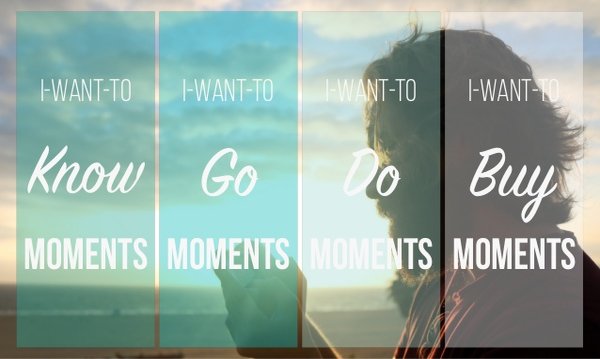In his recent book ‘Friction’, Jeff Rosenblum argues that the mid-funnel is often neglected by marketers, who are too worried with upper-funnel brand awareness and lower-funnel conversion tactics. He contends the mid-funnel is where customers grasp how the brand can impact their lives and what it truly stands for. We agree and today we’ll help validate this thinking by exploring how brands that implement mid-funnel strategies differentiate and create an emotional bond with their audience.
To succeed today, brands must define audience segments in terms of demographics, as well as psychographics and behaviors. Here’s how brands can reach these niche segments of consumers based on their mindset.
Targeting Audiences Based On Demographics
Consider the profiles of these two British men. Each born in 1948, each married twice, each has two children and each has considerable wealth. They appear to have important similarities from a targeting standpoint until you learn that one of them is Prince Charles and the other is Ozzy Osbourne. This being a clear demonstration of the limitations in targeting audiences based on demographics.
Market research generically defines consumer demographics in terms of age, gender, region, household income, household size, educational and ethnic background. Today, these groups have become too broad and tell us very little about what people stand for. For example, marketers often rely on household income to target prospects. But with the exception of homes, cars, high-end luxuries (think of 6-figure jewelry) and niche lifestyle goods, a consumer’s income level is not very relevant. Consider leisure and entertainment. The cost of an NFL seat is comparable to a night out in Las Vegas. Or, the cost of a premium concert ticket for Ariana Grande is comparable to a dinner at a Michelin-Starred restaurant or a day at the spa. Given how many people attend NFL games (The New England Patriots’ Gillette Stadium holds 66,000+; the AT&T stadium 100,000+), it would be naïve to think all football fans are ‘high-income earners’. These people rather choose to allocate a significant share of their income and/or trade down on other products to attend the game or indulge in other leisure activities that feel meaningful and fulfilling.
Targeting Audiences Based On Their Behavior
Behavioral targeting may earn better engagement and conversion rates, but it also commands high CPMs, as the audience is supposed to be ‘in-market’ and is often highly targeted (think of a patio-furniture buyer in Lexington, KY). By the time consumers are in the lower-funnel, it is too late to create a meaningful brand experience.
Digital, Rosenblum says, is the mid-funnel playground and content marketing is one of the most effective way to move these mid-funnel metrics. To be impactful, content marketing must teach the audience something new, as The North Face does with the athletic events it hosts. In the physical world, retail outlets are best positioned to create experiences that transform their stores into community hubs and entertainment destinations. For example, the cycle brand Rapha gives its stores an Italian cafe vibe, offering cyclists a place to gather, learn and browse the brand’s products.
These experiences establish an emotional connection between the brand and its prospects, turning them into loyal customers and advocates who build awareness for the brand in the upper-funnel.
Targeting Audiences Based On Their Mindset
Targeting based on consumers’ mindset is achieved by combining demographic, psychographic and behavioral information. Components include, but are not limited to:
- Pending life-stage change. That is, consumers who bought moving supplies from The Home Depot last month are highly-likely to buy decorative items for their new home this month.
- Environmental data, such as weather conditions, time of the day and local events enable advertisers to deliver highly-relevant mobile advertising.
- Psychographics that describe consumers’ personality and interests.
- Opinion, attitudes, beliefs, and hobbies. Think of targeting high-end spirit drinkers, scrapbook makers, users of teeth whitening products, fitness enthusiasts and donors to the arts, culture and political parties.
Once defined, these segments can be activated. That is, a segment ‘seed’ made of individuals that best represent the target audience is scaled by a Data Management Platform (DMP) through a look alike model. For example, insights company Kantar identified consumers open to staying at Holiday Inn hotels. Scaled by a leading DMP, the seed provided by Kantar led to 38% increase in consideration lift and a 500%+ increase in hotel bookings started on the hotelier’s website.
To summarize, our target customers are overwhelmed with advertising messages aimed at raising brand awareness, and coupons that are supposed to trigger conversion. The brands that succeed are the ones that connect emotionally with niche audiences of consumers and target them with relevant and meaningful offerings. Younger consumers, in particular, tend to block broadly targeted ads, but seek content from brands that is educational, meaningful and culturally relevant to them.
Mindset based targeting works because it brings brands closer to what matters most — the person.
The Blake Project Can Help: Accelerate Brand Growth Through Powerful Emotional Connections
Branding Strategy Insider is a service of The Blake Project: A strategic brand consultancy specializing in Brand Research, Brand Strategy, Brand Licensing and Brand Education




